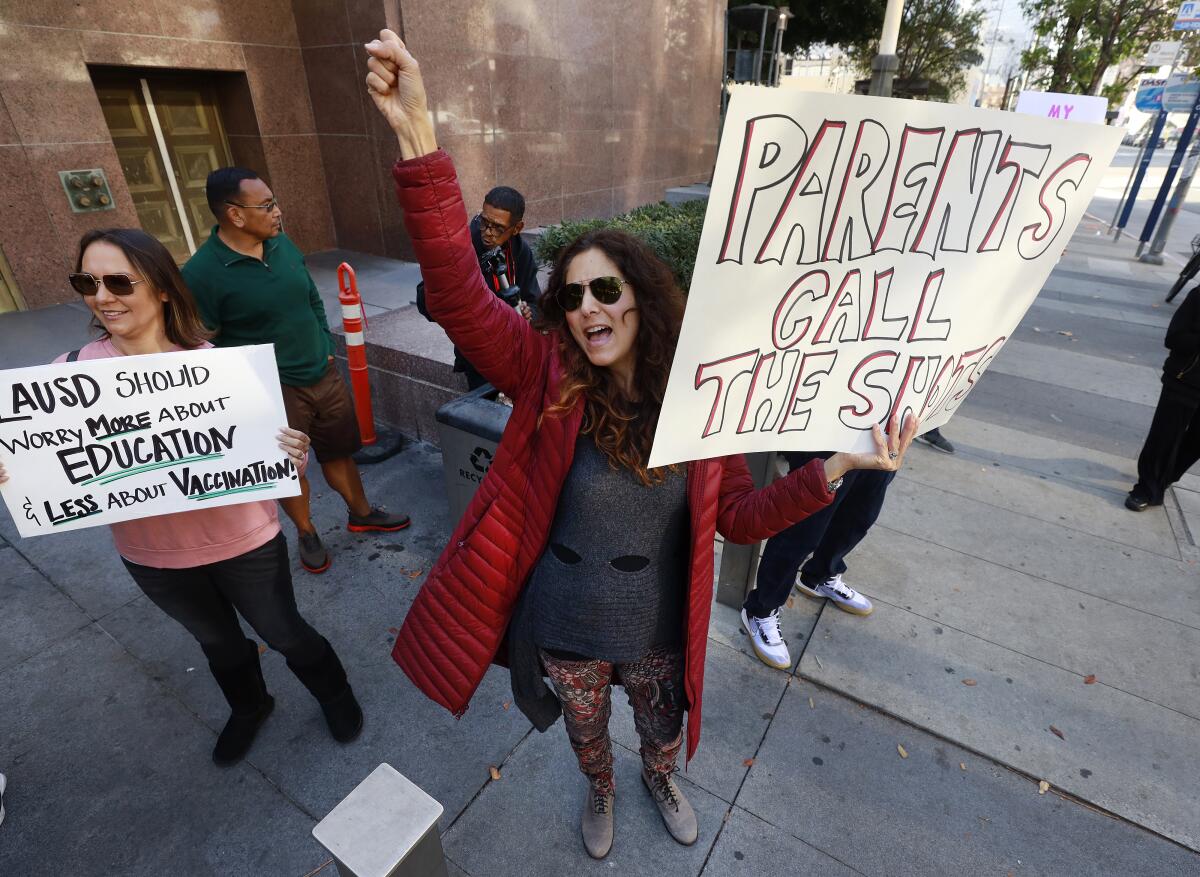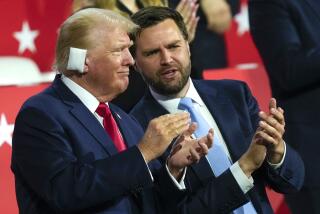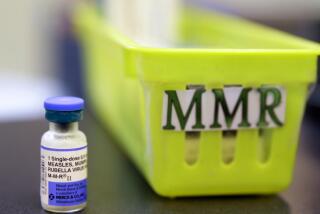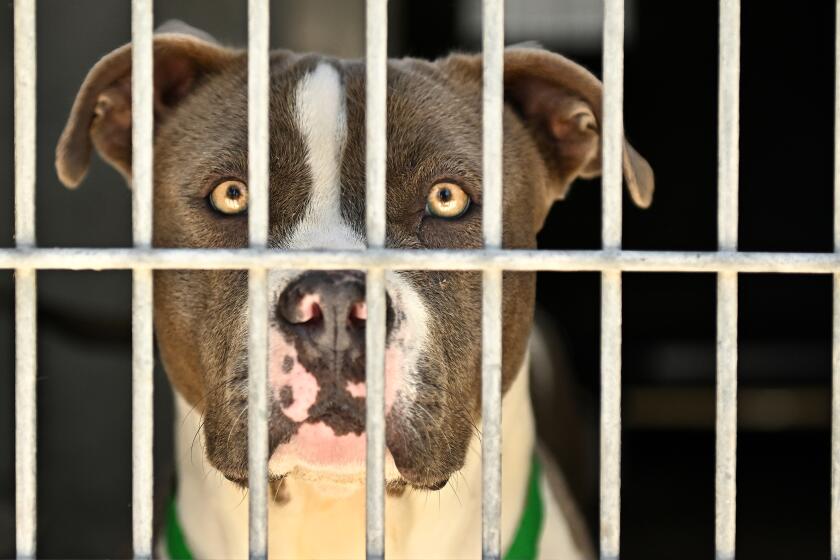Op-Ed: Los Angeles led the nation on measles vaccination mandates. Can it do that for COVID?

- Share via
On March 31, 1977, as a measles epidemic swept through Los Angeles, the L.A. County Public Health Department issued an ultimatum to the parents of the county’s 1.6 million schoolchildren: Get your kids vaccinated within a month or keep them home.
The “no shots, no school” warning was a novel threat at the time. Since the 1920s, when deadly smallpox was still around, no major city in the United States had locked the unvaccinated out of school.
The threat — voiced by Dr. Shirley Fannin, whom the Los Angeles Times described as “the energetic, no-nonsense physician” in charge of communicable disease control — brought results. About 40,000 county students were excluded from school — sent home or forced to sit in the school auditorium all day. Within a week, most had been vaccinated. The epidemic, which had killed two children, caused brain damage in five and left scores hospitalized with pneumonia, fizzled out.
By demonstrating that the public would submit to rigorous enforcement of school vaccine mandates, L.A. County had a powerful influence on the country. President Carter launched a national initiative to get measles and other recommended vaccines to all American children. Federal health officials twisted arms, shaming reluctant states, one by one, into tightening their vaccination rules. By 1981, 95% of U.S. schoolchildren had received the recommended vaccines. Over the next two decades, the U.S. nearly eliminated diseases including polio, rubella, measles and tetanus.
The Los Angeles Unified School District announced in September that it would exclude schoolkids 12 and older from campus on Jan. 10 unless they were vaccinated against COVID. On Friday, however, the district said the school board would reconsider that time frame and discuss on Tuesday delaying the mandate to fall 2022. About 34,000 kids — roughly 15% — have yet to show proof of vaccination. To provide those children with teachers for online learning would have deprived vaccinated kids at some schools of proper instruction, and “that wouldn’t have been fair,” said school board member Jackie Goldberg.
Goldberg, who grew up in L.A.’s Inglewood neighborhood, is troubled by vaccine hesitancy. She remembers the 1977 measles outbreak: “We were terrified. Kids were dying,” she said. At the time, many Angelenos had no healthcare, and the county’s free vaccination clinics were seen more as a gift than what some view them today — as an imposition.
In earlier decades, vaccination rates were low in Los Angeles for two reasons: Lower-income people couldn’t afford or get access to vaccines, and many people were indifferent to the risks of measles, considering the disease a normal part of childhood. But there was little ideological opposition. Well into the 1990s, only about 0.5% of children in California were exempted from the vaccine requirements because their parents opposed or mistrusted vaccination.
What was different back then? No social media, of course. And partisan politics played no role in vaccination rates. Dr. James Cherry, who has taught in UCLA’s pediatric infectious diseases department since 1973, can’t recall meeting any anti-vaccine Republicans during the 1977 pandemic. He finds it remarkable to hear Govs. Greg Abbott of Texas and Ron DeSantis of Florida fighting mandates aimed at stopping a virus that has killed more than 790,000 Americans.
“The thing just blows the mind,” he told me. “Measles was bad, bad for a lot of reasons, but COVID is a hell of a lot worse. And we could prevent virtually all deaths by vaccination.”
Today, the use of social media by anti-vaccine activists has revealed the vulnerability of the vaccination effort. Public health departments are understaffed and overwhelmed by work and attacks of vitriol and violence. And fighting endemic infectious diseases has never been easy.
Driven by politics, battles over COVID vaccination mandates could ripple outward to threaten other vaccine mandates long in place for diseases that are still deadly.
Sen. Richard Pan (D-Sacramento), who fought for state laws to close loopholes that were used by people trying to avoid vaccinations against childhood diseases, is still hopeful common sense will win out. But the process may look less like public consensus than an angry majority clamping down on anti-science rebels.
“People are going to get frustrated, tired of the persistence of these diseases, and there will be more general public pressure for mandates,” he said. “The question is, how many people will die in the process?”
Arthur Allen is an editor for Kaiser Health News, which publishes California Healthline, an editorially independent service of the California Health Care Foundation. He is the author of “Vaccine: The Controversial Story of Medicine’s Greatest Lifesaver.”
More to Read
A cure for the common opinion
Get thought-provoking perspectives with our weekly newsletter.
You may occasionally receive promotional content from the Los Angeles Times.










